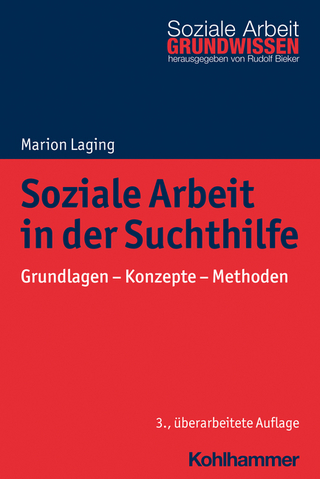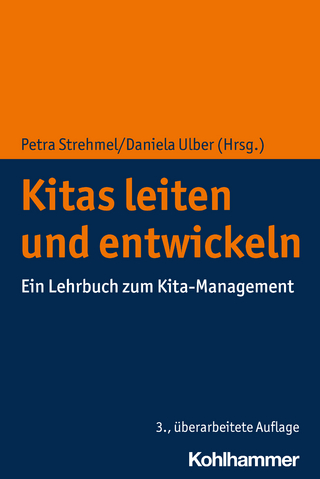
Proposal Writing
SAGE Publications Inc (Verlag)
978-1-4129-8899-5 (ISBN)
- Titel erscheint in neuer Auflage
- Artikel merken
Throughout this book, readers are presented with agency/organizational analyses using a conceptual framework that is tied to a theoretical perspective about the desired outcomes. This framework provides the coherence for the book and assists individuals with the "mechanics" of writing and challenges them to understand why a particular strategy and with what desired and measurable outcome are they seeking. The book also conveys the "new grantsmanship" which is essential for navigating the economic, political, and social dimensions of proposal and grant writing.
The Fourth Edition is expanded and reorganized to follow greater coherence and logic in the presentation of the chapters. The new sections are:
@!fundamentals of proposal writing
@!the three lenses of proposal @!conceptualization
@!writing the proposal.
Soraya M. Coley is president of Cal Poly Pomona University. Prior to that, she served as provost and vice president for academic affairs at California State University, Bakersfield, and at Alliant International University, as well as dean of the College of Human Development and Community Service at California State University, Fullerton. She has nearly 30 years of higher education experience and has worked with nonprofits, community-based and civic organizations on program design, evaluation, and grant writing. Cynthia A. Scheinberg is a psychologist (inactive) with 23 years of senior administrative leadership in the nonprofit sector. She has successfully designed, written, obtained, and implemented federal, state, foundation, and local government funding. In addition, she taught program design and proposal writing for 18 years at California State University, Fullerton in the Human Services Department. Now happily retired, she consults on program design, grant writing and compliance issues, and in her free time, enjoys grandchildren and playing clarinet in two community bands.
Table of Contents
Title Page
Dedication
List of Figures
List of Tables
Preface to the Fourth Edition
Chapter One: An Orientation to Proposal Writing
A. A Book for the Beginning Grant Writer
B. A Brief History of Giving and Philanthropy
C. About the Non-Profit Agency
D. Differences between Grants and Contracts
E. Funding Sources and Guidelines for Grants and Contracts
• Governmental versus Foundation Applications
F. The Proposal Submission and Scoring Processes
• Proposal Scoring
Chapter Two: Organizing the Writing and Using Technology
A. The Nuts and Bolts of Writing a Proposal
B. Writing for an Established versus New Organization
• Writing for an Established Organization
C. Writing Style and Format
D. The Components of the Proposal
E. Using Techology
• The Role and Use of Search Engines
• Review of Funders’ Websites
• Assessing Data
• Electronic Submission of the Proposal
Chapter Three: Assessing the Organization
A. Mission-Driven Analysis of the Organization
B. Organizational Capacity
• Survey of the Organization
C. The Agency Capability Statement
• Sample Applicant Capability Statement
• Supportive Documentation
D. Working with a Collaborative
E. Writing a Proposal for a Collaborative
• Determine the Need and Establish Goals
• Explore Potential Program Offerings and Benefits
• Develop the Final Program Concept and Budget
Chapter Four: Generating and Refining Proposal Ideas
A. Understanding the Community
• Analyzing the Community through Data
- Client/Community Needs Assessment
- City, County, and State Demographic Data
- Journal Articles
- Local Newspapers
B. Problem or Needs-Based Program Ideas
C. Understanding Barriers in Program Design
• Barriers to Service
D. Agency Capacity and Sustainability
• Sustainability: Determining Income Generating Potential
• The Life Cycle of a Project
• Multi-Source Funding
E. Formulating Program Ideas
F. Applying the Logic Model
Chapter Five: Writing the Needs/Problem Statement
A. The Goal of the Need Statement
B. A Guide to Writing the Need Statement
• The Nature and Extent of the Need/Problem
• Factors Contributing to the Problem or Conditions
• Impact of the Need/Problem
• Promising Approaches for Improved Results
Chapter Six: Writing Goals, Objectives, and the Implementation Plan
Section One: Goals and Objectives
A. Program Goals
B. Formulating Objectives
C. Types of Objectives
• Process Objectives
• Outcome Objectives
Section Two: Implementation Plan
A. Developing the Implementation Plan
• Inputs – Resources/Preparatory Activities
• Process or Program-Related Activities
• Outputs/Units of Service
B. Writing the Project Narrative
C. Scope of Work
D. Project Timeline
Chapter Seven: Writing the Evaluation Plan
A. The Benefits of Evaluation
• Funder’s Perspective
• Organization’s Perspective
B. Developing an Evaluation Plan
C. Using the Logic Model
D. Process Evaluation
E. Outcome Evaluation
F. Writing the Evaluation Section
G. Other Evaluation Considerations
Chapter Eight: Creating the Budget
A. The Budget Context
B. Preparation of a Line Item Budget
C. Other Types of Budgets
• Matching Funds and In-Kind Budgets
D. Other Budgeting Issues
• Budget Adjustment
• Budget Amendment
• Contract Negotiations and Subcontracting
Chapter Nine: Finishing Touches
A. Requesting Letters of Support
B. Proposal Abstract
C. Title and Title Page
D. Cover Letter
Appendix A: Estimating Time
Appendix B:Funding Resource Information
References and Suggested Readings
Index
About the Authors
| Erscheint lt. Verlag | 2.7.2013 |
|---|---|
| Reihe/Serie | SAGE Sourcebooks for the Human Services |
| Verlagsort | Thousand Oaks |
| Sprache | englisch |
| Maße | 152 x 228 mm |
| Gewicht | 220 g |
| Themenwelt | Sozialwissenschaften ► Pädagogik ► Sozialpädagogik |
| Sozialwissenschaften ► Soziologie | |
| Wirtschaft ► Betriebswirtschaft / Management | |
| ISBN-10 | 1-4129-8899-3 / 1412988993 |
| ISBN-13 | 978-1-4129-8899-5 / 9781412988995 |
| Zustand | Neuware |
| Haben Sie eine Frage zum Produkt? |
aus dem Bereich



